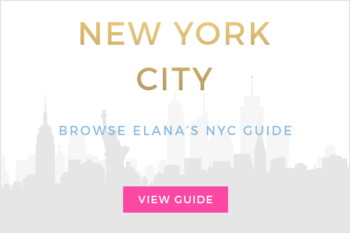How do you know if an industry or a career path is right for you? There are so many career paths and ways to use your talents. For example, if you’re like me and love writing, you could be an author, a professor, a journalist, a content strategist, a public relations executive, a lawyer, and countless other things. With all of the available job options, how do you know what path to take? I’ve been there. A few years ago I applied for jobs in a wide range of industries because I couldn’t decide what I wanted to do—everything seemed interesting. It was easier to figure out what I didn’t want to do than what I did. I started doing something I love “for fun,” and it ended up turning into a career I now love. When I worked as a paralegal, I started writing blog posts every weekend and scheduling them to be published throughout the week. My writing improved, I learned some marketing skills, and I promoted the blog on social media. It ended up leading me to make the switch from the legal industry into social media, marketing, blogging, and freelance writing. Now I work at a marketing agency, manage Elana Lyn, and write for my “dream” publications such as Forbes, Fast Company, Fortune, and Time! I was able to create my dream job—and you can too!
Now that I have my own business (Elana Lyn is an LLC that encompasses my freelance writing and blog) and a full-time job, my taxes are a bit more complicated. I have business expenses, contracts for sponsored posts and articles, W2s and 1099s, and payments to track and organize. When TurboTax reached out to see if I’d share my story and advice, I jumped at the opportunity. I serendipitously stumbled on the right career path for me, but I now provide career advice about how other people can do the same (although perhaps more intentionally). Here is my advice for finding (and creating!) your dream job and staying organized for tax season.

How to Create Your Dream Job:
1. Lead with your strengths:
Write down a list of your top strengths. I recently read StrengthsFinder 2.0 for a book club at work, and the advice really resonated with me. Another self-analysis resource that can help you figure out exactly what kind of career and work environment will resonate with you is the Myers-Briggs personality test.
It’s possible that you could be good at anything if you tried hard enough—but shouldn’t your strengths be indicative of what you should be doing? Won’t you be happier (and better at your job) if you find a career that is suited to your strengths? I have taken both the StrengthsFinder and Myers-Briggs and found that they have helped me understand my values, strengths, and what I should look for in a work environment.
For example, you might think that you’re not a math person, but find out that you love using logic to solve problems. In that case, you might actually love something you’ve never tried, like code!
2. Evaluate your past:
Answer these questions about every place you’ve worked. What did I like the most and the least about the company? What did I like the most and the least about the company culture? What did I like most and least about my manager? What did I like most and least about the people I worked with? What was the most challenging thing about working there? When was I the happiest or the proudest? What was my biggest accomplishment? What did I like the most and the least about my responsibilities?
Your answers will help you clarify what you liked most and least about previous workplaces so that you can look for similar or different characteristics in the future.
You don’t have to keep doing the kind of work you’ve always done, but you can analyze your past work to figure out exactly what you liked, what you didn’t like, and what situations bring out your best work and happiest self.
3. Talk to as many people as possible:
Go on informational interviews and learn about their career paths and advice. Ask about their job, industry, and professional aspirations. Always come with questions in advance so that you get the most out of the meeting or phone call as possible.
And don’t limit yourself to people you know or are connected to in some way. Go on LinkedIn and read people’s job descriptions or go online and read interviews and articles about people you admire.
Before you set your heart on a career, or completely rule it out, make sure you find out what the job is like on the day-to-day.
4. Take classes and try something new:
Take classes, attend workshops, read books, watch countless YouTube tutorials, and try something new. You may find out that you’re passionate about coding, website design, graphic design, writing, or something else entirely. Technology makes it so easy to learn new skills. A new hobby can lead to an entirely new career like it did for me.
5. Consider the type of work environment where you will thrive:
Are people competitive with one another or collaborative? Are they friends outside of the office? Is the company hierarchical or flat? Do you work as a team or work primarily on your own? Is there a great deal of red tape or will you have the power to make decisions and move quickly? Can people work from home or are they expected to work in the office? What is the work-life balance like? What are your salary expectations?
Think about the type of work environment that will be a good fit for you and the lifestyle you hope to have. And if you aren’t sure, try taking up some work on the side to help you decide. If you work in a collaborative office, try doing some solo freelancing. If you spend your workdays by yourself, why not work on a collaborative project on the side? (Tip: coding projects are great for group work!)
6. Do what makes you happy:
People gave me two great pieces of advice when I was considering the right career path for me. One was to think about what you do “for fun,” and what you love so much that you’d be willing to do it for free.
The other was a piece of advice from my dad. He said that you shouldn’t necessarily choose the most “prestigious” job just so you could impress people at cocktail parties. Instead of choosing the most “impressive” offer—something I had been prone to do in the past—choose the one that will make you happiest and allow you to grow and learn.
How to Use TurboTax Self-Employed to Stay Organized:
TurboTax Self-Employed’s key offerings are Expense Finder, SmartLook, and Quickbooks Self-Employed. They make it easy to stay organized throughout the year so filing your taxes isn’t a last minute sprint to the finish line. They also have industry experts and easy-to-use tech so you have support along the way. The Turbo Tax Self-Employed software makes it easier to track deductibles and expenses.
A few perks:
Expense Finder: Expense Finder will help you find deductible business expenses that you can claim. (You’re busy running your business so it’s nice not to have to read up on all the potential claims you can make!) It also will scan your bank account and credit card statements to look for business expenses.
SmartLook: Video chat with a self-employment tax expert so that you can get your questions answered in real-time and make sure everything is on point. You can even share your screen with an agent so they can check that you filled things out correctly.
Quickbooks Self-Employed: TurboTax Self-Employed includes a free subscription to QuickBooks Self-Employed. Use the platform to track expenses, scan and file receipts, estimate your quarterly taxes, and create and send invoices so everything is organized when it’s tax season again.
This post is sponsored by TurboTax.































32 Responses to How to Create Your Dream Job